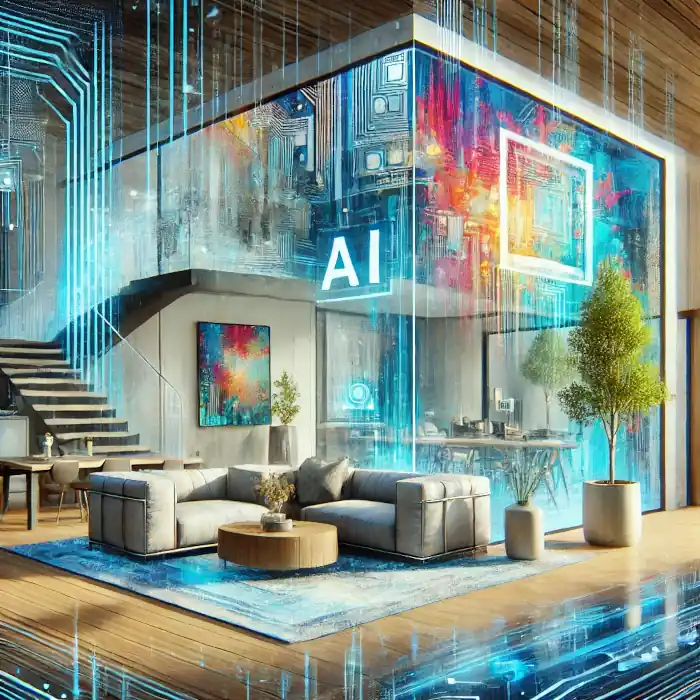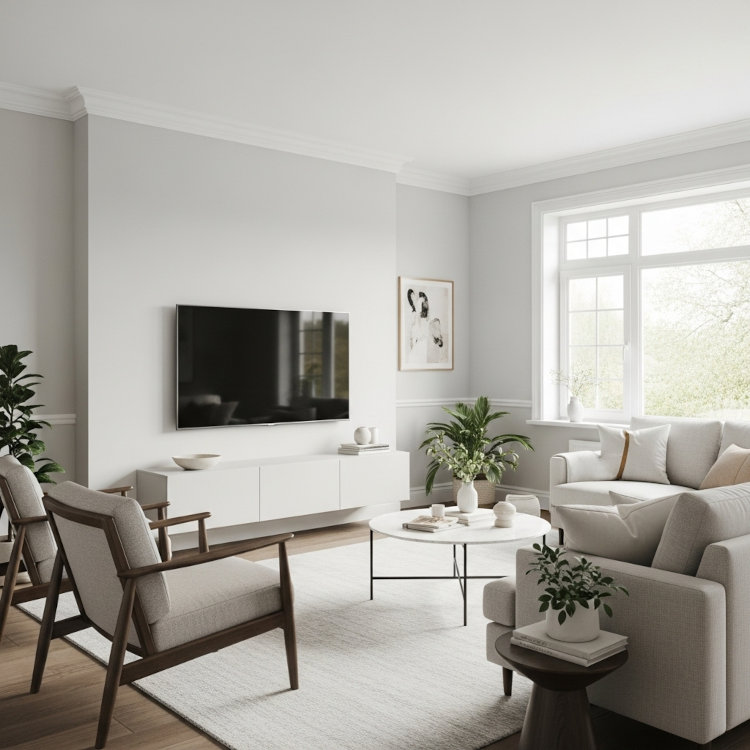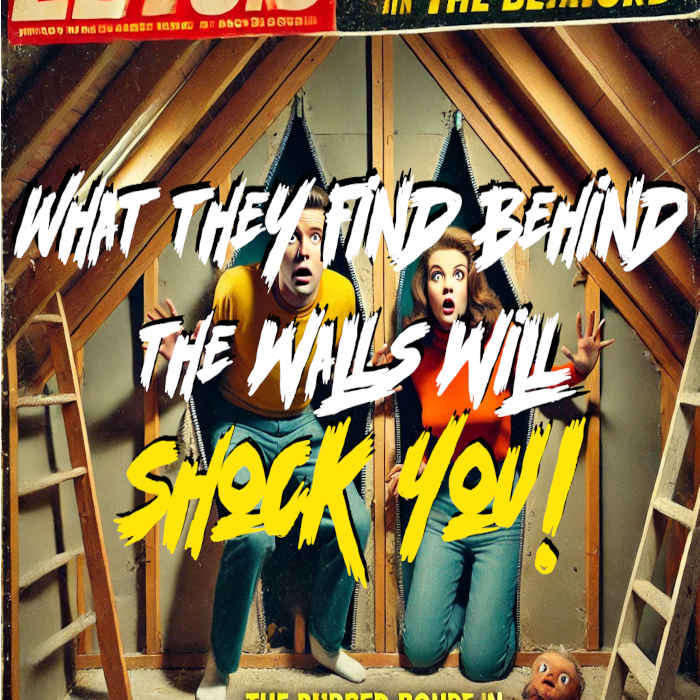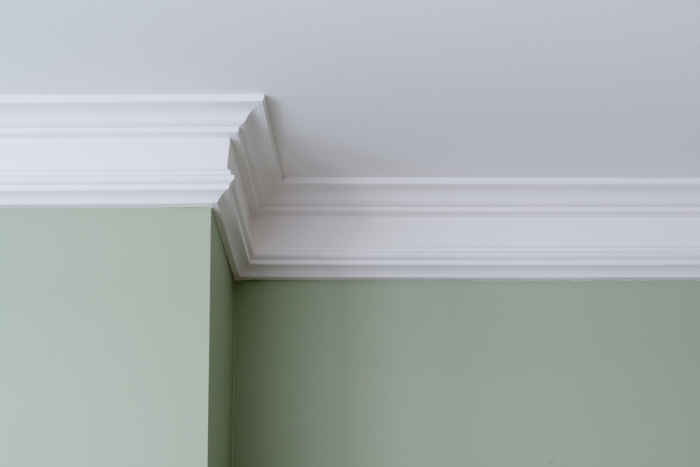As an Amazon Associate, I earn from qualifying purchases. Privacy Policy / Terms
Art and technology have always been intertwined. Technology has changed how we create and view art. This change started with the invention of perspective during the Renaissance. It continued with the rise of photography in the 19th century.
In the digital age, this relationship has taken a new turn. The use of technology in painting, especially artificial intelligence (AI), is changing the art world in new ways.
AI is not just a tool for artists. It’s a collaborator, a critic, and even an artist in its own right. It’s pushing the boundaries of what we consider art and challenging our notions of creativity.
This article explores the role of AI in modern painting. We will explore how AI is used to create new art forms. We will discuss the benefits and challenges of this integration. We will also look at what it means for the future of the art industry.
From digital painting software to AI-generated art, we’ll examine the many ways in which technology is revolutionizing painting. We’ll also look at the ethical considerations and debates surrounding AI in art.
Whether you love art, are a professional artist, or are just curious, this look at AI in painting will be interesting. Join us as we delve into this fascinating topic.
The Intersection of Art and AI
In recent years, AI has emerged as a significant force in art creation. This technological integration in painting allows artists to experiment and innovate beyond traditional methods. AI’s ability to analyze and learn from vast datasets empowers it to mimic and even create new artistic styles.
AI provides tools that can enhance creativity. It offers artists opportunities to explore areas once thought unimaginable. By analyzing trends and patterns, AI can suggest novel directions in artistic expression. This collaboration between art and technology fosters a dynamic environment where creativity knows no bounds.
However, the integration of AI in art is not without its challenges. Artists must navigate the fine line between using AI as a tool and losing the human touch in their work. As AI keeps changing, artists must find balance. They need to make sure their art stays true, even with new technology.
A Brief History of Technological Advances in Art
Art has always evolved with technology. From the invention of paint tubes to photography, technology has significantly shaped artistic expression. Each advance opened new possibilities for visual representation.
The industrial revolution brought about significant changes. It allowed artists to experiment with materials like synthetic paints and portable canvases. These innovations expanded the artist’s toolkit and facilitated plein air painting, capturing moments of realism.
The digital age marked a new era in art history. Computers and digital tools transformed how art is created and consumed. Tools like Photoshop and digital tablets revolutionized art production, allowing artists to blend traditional techniques with digital innovation. As technology progresses, the boundary of what art can achieve continues to expand.
Defining Technological Integration in Painting
Technological integration in painting refers to the use of digital tools and systems in creating artwork. This includes software, computers, and AI algorithms that support and enhance the creative process. These technologies open new frontiers for artists, shifting traditional boundaries in art.
Painting software is a key component of this integration. It provides artists with a variety of features, from digital brushes to layers and color correction. This not only saves time but also allows for greater experimentation without the fear of irreversible mistakes. Artists now have access to a digital canvas that evolves with each update.
Artificial intelligence plays a crucial role in this integration. It pushes the limits of creativity by offering new techniques and styles. AI can analyze an artist’s work and suggest improvements or generate original pieces based on learned patterns. This symbiosis between human creativity and machine learning is reshaping how art is conceived and produced.
AI-Generated Art: The New Frontier
AI-generated art stands at the cutting edge of creativity and technology. Machines are now capable of producing images, sculptures, and even animations. This new frontier offers limitless possibilities, fueling innovative expressions.
Artists and technologists collaborate to create artworks that blend human insight with machine precision. AI learns from vast datasets and mimics artistic styles, offering fresh approaches to age-old techniques. This fusion of art and technology challenges conventional ideas about creativity.
The impact of AI on art creation is profound. It democratizes the process by making it accessible to anyone with a computer. Hobbyists and professionals alike can use AI tools to expand their creative horizons. This accessibility fosters a diverse range of artistic expressions.
However, this shift raises questions about originality and authenticity in art. Is art created by AI genuinely original, or is it merely an echo of existing works? This debate continues to provoke thought and discussion in the art community. AI-generated art prompts us to reconsider the essence of art itself.
How AI Mimics Traditional Painting Techniques
Artificial intelligence excels at replicating traditional painting techniques with uncanny accuracy. Through complex algorithms, AI learns brushstroke styles and color palettes. This learning allows machines to recreate the subtleties seen in classical paintings.
AI-powered tools can emulate oil paints, watercolors, and even intricate textures. Artists can select these options to simulate traditional media in a digital space. This technology blends the past with the present, merging classic techniques with modern platforms.
This capability doesn’t replace traditional methods but complements them. Artists now have a diverse toolkit that enriches their creative possibilities. By mimicking traditional methods, AI fosters a deeper appreciation for both history and innovation in art.
Case Studies: Artists Embracing AI
Several artists around the globe are incorporating AI into their work with incredible results. One such example is artist Mario Klingemann, renowned for his use of neural networks. Klingemann’s work explores the intersection of human creativity and machine processing.
Anna Ridler is another pioneer, using AI to create thought-provoking pieces. Her projects often involve large datasets and complex machine learning algorithms. Ridler’s work prompts viewers to rethink the role of machines in the creative process.
Robbie Barrat, a young talent, uses AI to push boundaries in the art world. Barrat’s art is known for its abstract, AI-generated compositions that challenge aesthetic norms. Through AI, he explores new dimensions of what art could be.
These artists exemplify the innovative spirit thriving in AI-assisted art. They not only embrace technology but also redefine its potential. Through their projects, they help tell a story. This story shows how art and technology come together. They create new ways to express ideas.
The Rise of Digital Painting Software
Digital painting software has revolutionized the art world, providing artists with new ways to express creativity. These powerful tools allow for unlimited experimentation without the constraints of physical materials. This flexibility fosters innovation and inspires new artistic techniques.
Software advancements have made digital painting accessible to both amateurs and professionals. Artists can easily experiment with diverse styles and media in a single platform. This versatility broadens creative possibilities and encourages artistic exploration.
The shift to digital does not diminish the value of traditional techniques. Instead, it offers a complementary path that expands artists’ capabilities. Through digital tools, artists merge classic techniques with modern technology, enriching their artistic practice and expression.
Popular Painting Software and Tools
Numerous digital painting applications have emerged, each offering unique features for artists. These tools cater to both newcomers and seasoned professionals, enhancing their creative workflows.
Notable software includes:
- Adobe Photoshop: A versatile application renowned for its robust painting and editing features.
- Corel Painter: Known for simulating traditional painting with a wide range of brushes and textures.
- Procreate: A favorite among illustrators for its intuitive interface and powerful tools.
- Krita: An open-source program that offers a comprehensive painting toolkit.
- Clip Studio Paint: Popular for creating comics and detailed illustrations.
These tools empower artists to push boundaries and explore new artistic horizons. They have become essential components of modern art creation, aligning with the evolving landscape of digital art.
The Collaboration Between Artists and AI
Artists and artificial intelligence (AI) increasingly collaborate to push the limits of creativity. This partnership blends human intuition with machine precision, leading to novel art forms. AI assists artists by generating ideas, exploring styles, and refining techniques.
The synergy between artists and AI facilitates innovation beyond traditional means. Artists can now experiment with complex patterns and dynamic compositions, previously unattainable with conventional tools. This collaboration gives rise to unique visual experiences that challenge conventional aesthetics.
AI’s role extends beyond mere assistance; it becomes a creative partner. Artists engage with AI to explore new narratives and themes, transforming how art is conceived. By using AI in their work, artists start a journey of discovery. They unlock new potential that was not seen before in art.
Ethical Considerations and the Authenticity Debate
The integration of AI in art raises important ethical questions. A central concern revolves around the authenticity of AI-generated art. Can art created by algorithms hold the same value as human-created pieces?
These questions touch upon the essence of creativity and originality. AI’s ability to mimic artistic styles challenges the notion of individual artistic expression. As machines reproduce and innovate, artists and audiences alike grapple with defining true authorship in digital art.
Addressing these ethical challenges is crucial for the future of art. As AI continues to evolve, the dialogue surrounding authenticity and ownership must also advance. Stakeholders must establish new norms that balance technological progress with respect for traditional artistry.
AI’s Impact on Art Curation and Exhibition
AI is reshaping how art is curated and displayed. Curators leverage AI to analyze vast art collections quickly. This technology helps identify patterns and trends that would take humans much longer to find.
Exhibitions benefit from AI through dynamic content and interactive experiences. AI-driven installations can adapt to viewer interactions, creating personalized art journeys. This transforms static displays into immersive storytelling experiences.
AI also broadens access to art globally. Online platforms use AI to curate virtual exhibitions, overcoming geographical limitations. As a result, diverse audiences can explore art like never before, enriching cultural exchange and understanding across borders.
The Democratization of Art Creation Through AI
AI is democratizing art like never before. With AI, anyone can create art, regardless of skill level. This opens doors for hobbyists and non-traditional artists to express creativity.
Painting software powered by AI offers intuitive tools. These tools simplify complex techniques, making art accessible to all. Beginners can now produce professional-level artworks with ease.
AI also supports artists with disabilities, providing new means of expression. By breaking down barriers, AI fosters inclusivity in the art community. This technological integration in painting is reshaping who can call themselves an artist.
AI in Art Education and Training
AI is transforming art education by introducing innovative learning tools. Painting software equipped with AI features helps students grasp difficult concepts swiftly. Interactive tutorials guide learners through step-by-step processes, making learning more engaging.
AI also offers personalized feedback and critique, helping students improve rapidly. With AI’s analysis, art students receive tailored advice to hone their skills. This individualized approach enhances their learning journey.
Furthermore, AI prepares students for future art careers. By integrating art and technology, educational systems ensure graduates are ready for a digital art landscape. This technological shift emphasizes the importance of AI in nurturing the next generation of artists.
The Future of AI in Painting: Trends and Predictions
AI continues to evolve, pushing art boundaries further. Future trends suggest deeper AI integration in creative processes. This will lead to more advanced and personalized art experiences.
One prediction is AI’s growing role in co-creating with artists. Artists might shift from solitary creators to collaborators with machines. This partnership could redefine artistic identity and authorship in profound ways.
Moreover, AI tools will likely become more intuitive and user-friendly. This will make them accessible to wider audiences. As technology develops, expect AI-generated art to become even more common in galleries and exhibitions worldwide.
The Role of VR and AR in Painting
Virtual Reality (VR) and Augmented Reality (AR) are transforming painting experiences. These technologies offer immersive environments for art creation and display. Painters can now experiment within virtual spaces, transcending traditional canvas limitations.
Using AR, viewers experience art in their physical space, overlaying digital works onto real-world settings. This interaction redefines how audiences engage with artworks. It bridges the gap between art and the viewer’s reality, enhancing emotional connections.
VR also offers collaborative opportunities among artists worldwide. They can paint together in shared virtual studios, pioneering new forms of communal creativity. These advancements in art and technology herald a future where digital and traditional art forms coexist seamlessly.
Interactive and Generative Art Installations
Interactive art installations are redefining audience participation. With AI, these installations respond dynamically to viewer interactions, creating personalized art experiences. Viewers become an integral part of the art piece, influencing its form and meaning.
Generative art utilizes algorithms to create continuously evolving art forms. Each viewing becomes unique as the artwork changes in real-time. This evolution challenges traditional notions of fixed art pieces, introducing fluid and adaptable creations.
Furthermore, these installations leverage data inputs, such as environmental factors, to adjust and transform. This means art can react to weather, temperature, or audience emotions. Generative and interactive installations mix art and life. They captivate modern audiences with their newness and flexibility.
Conclusion: Embracing the AI Revolution in Art
The integration of AI into painting is reshaping creative landscapes. As artists adopt these new tools, they push the boundaries of what art can achieve. These advancements prompt us to reconsider the very nature of creativity itself.
Embracing AI in art does not mean abandoning traditional methods. Instead, it opens opportunities to enhance and expand artistic expression. Artists who harness AI’s potential can innovate in ways previously unimaginable, leading to groundbreaking works.
As we move forward, it is crucial to maintain a balance. We must honor traditional practices while exploring the possibilities of AI. By doing so, we embrace a future where art thrives at the intersection of human insight and technological prowess. This mix of ideas makes the art world better. It also invites everyone to join in this exciting journey.
Views Expressed Disclaimer
The views, opinions, and information presented in this article are for informational purposes only and do not necessarily reflect the official policies or positions of Chagrin Falls Painting. While every effort has been made to ensure accuracy, Chagrin Falls Painting is not liable for any errors, omissions, or decisions made based on the content provided. Readers are encouraged to consult professionals for specific advice or assistance related to their unique circumstances.








